At Expedia, I'm working on integrating more design thinking methodologies into our process. In May, I planned and facilitated an adaptation of Google's Design Sprint. The Design Sprint, as explained by Jake Knapp in his book is a five day iterative process involving design, prototyping, and testing in front of real people. It's based on the Stanford Design School's Design Thinking Process, but condensed and accelerated to fit in a work week. Key aspects include having a diverse team from across multiple disciplines, a dedicated space to enable shared meaning-making, and real users to get feedback from on the last day.
The Design Sprint begins with sharing and unpacking individual knowledge. One way we did this was by creating a user journey map.
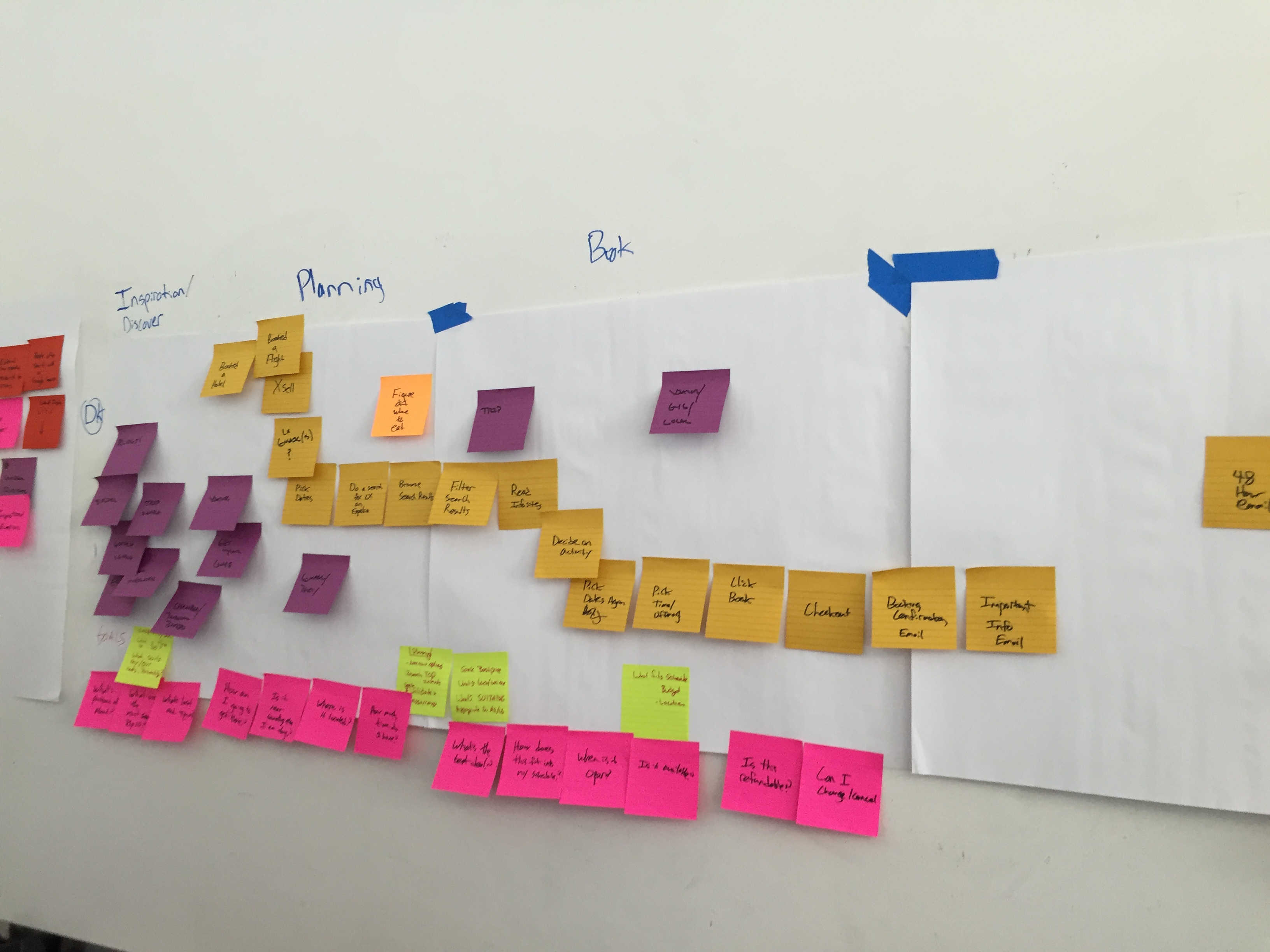
Grouping ideas to address our user problem.
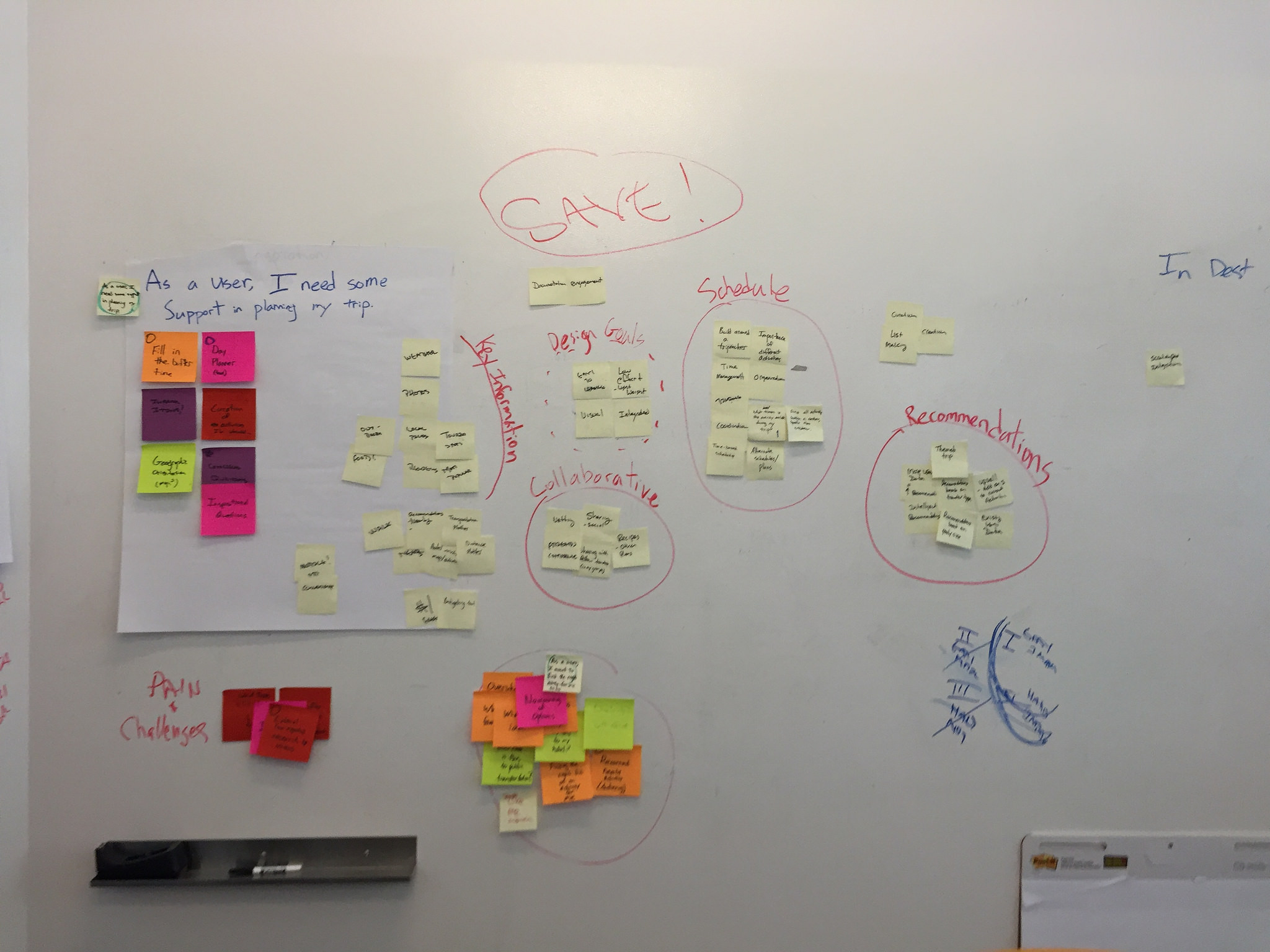
Sketching works well as an ideation method for quickly getting ideas and flows onto paper. Sketches also make it easy to explain ideas to others in the group as visual aids.
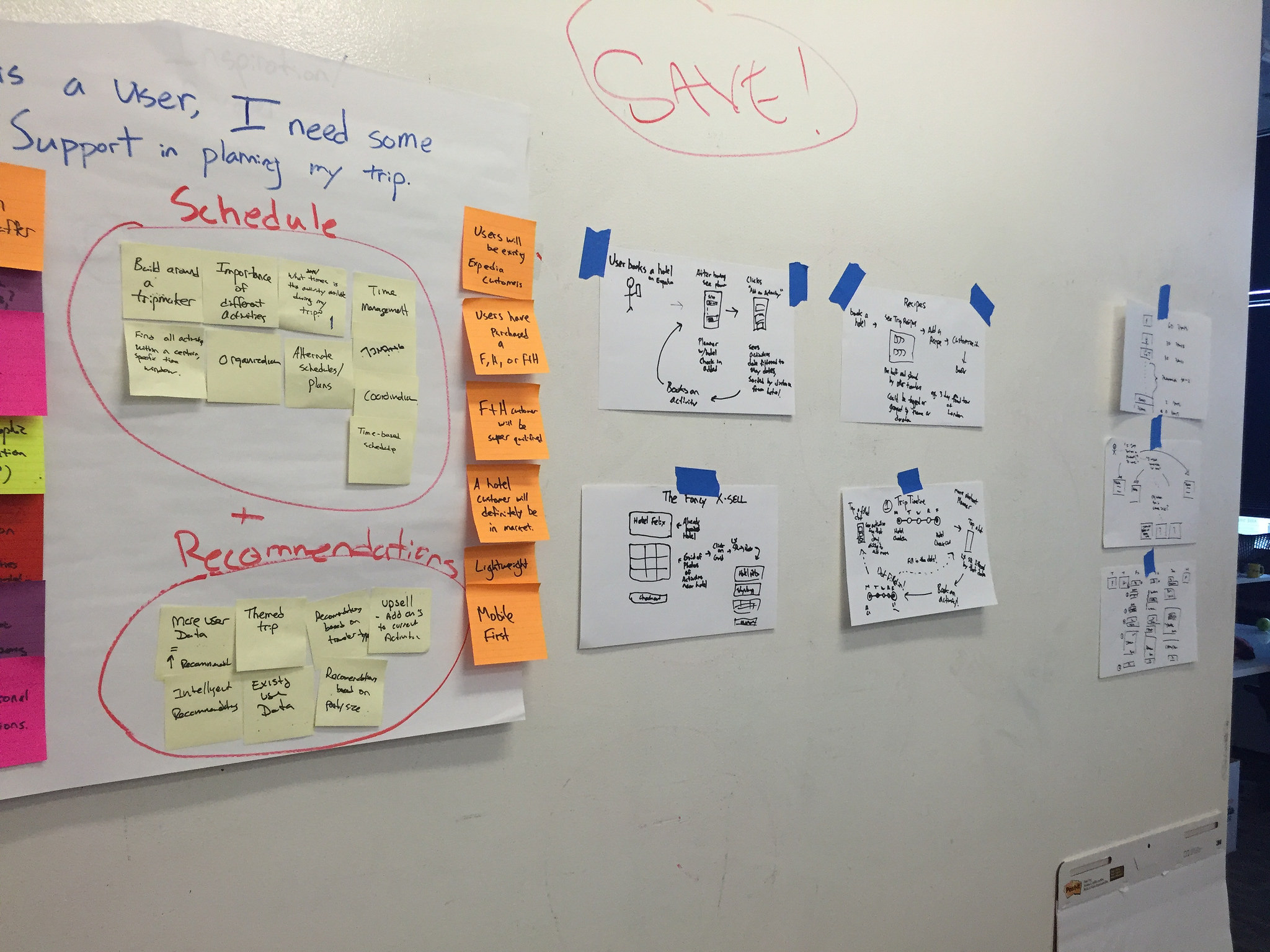
Once the team agrees on a solution to go with, they collaboratively draw a giant storyboard. Having a dedicated space to work in enables you to keep relevant previous work always available, such as the user story and pain points to the left of our storyboard.
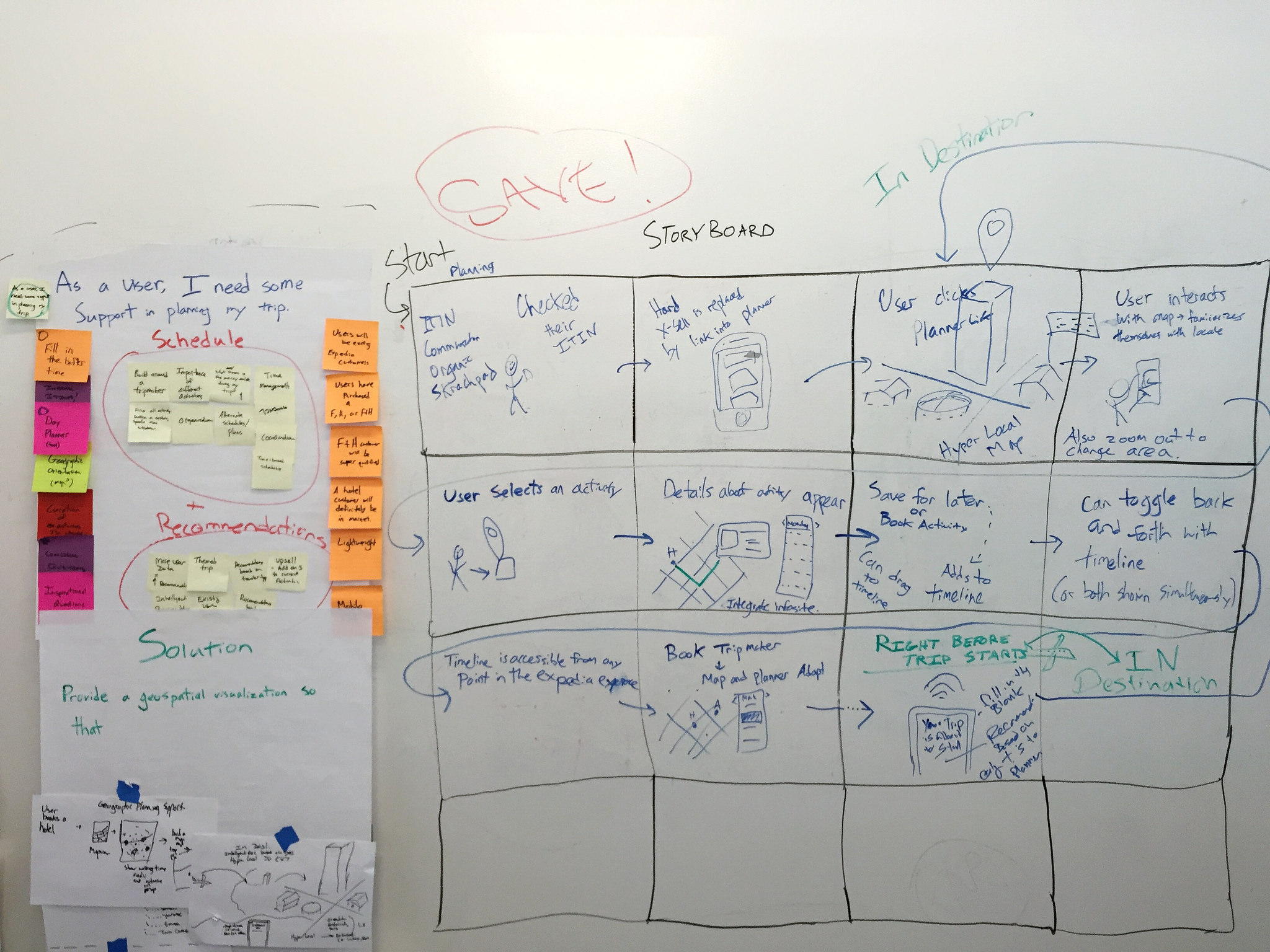
Being prepared is an important part of facilitating a design sprint. You need plenty of paper, post-it notes, dry erase markers and boards, and of course, coffee.
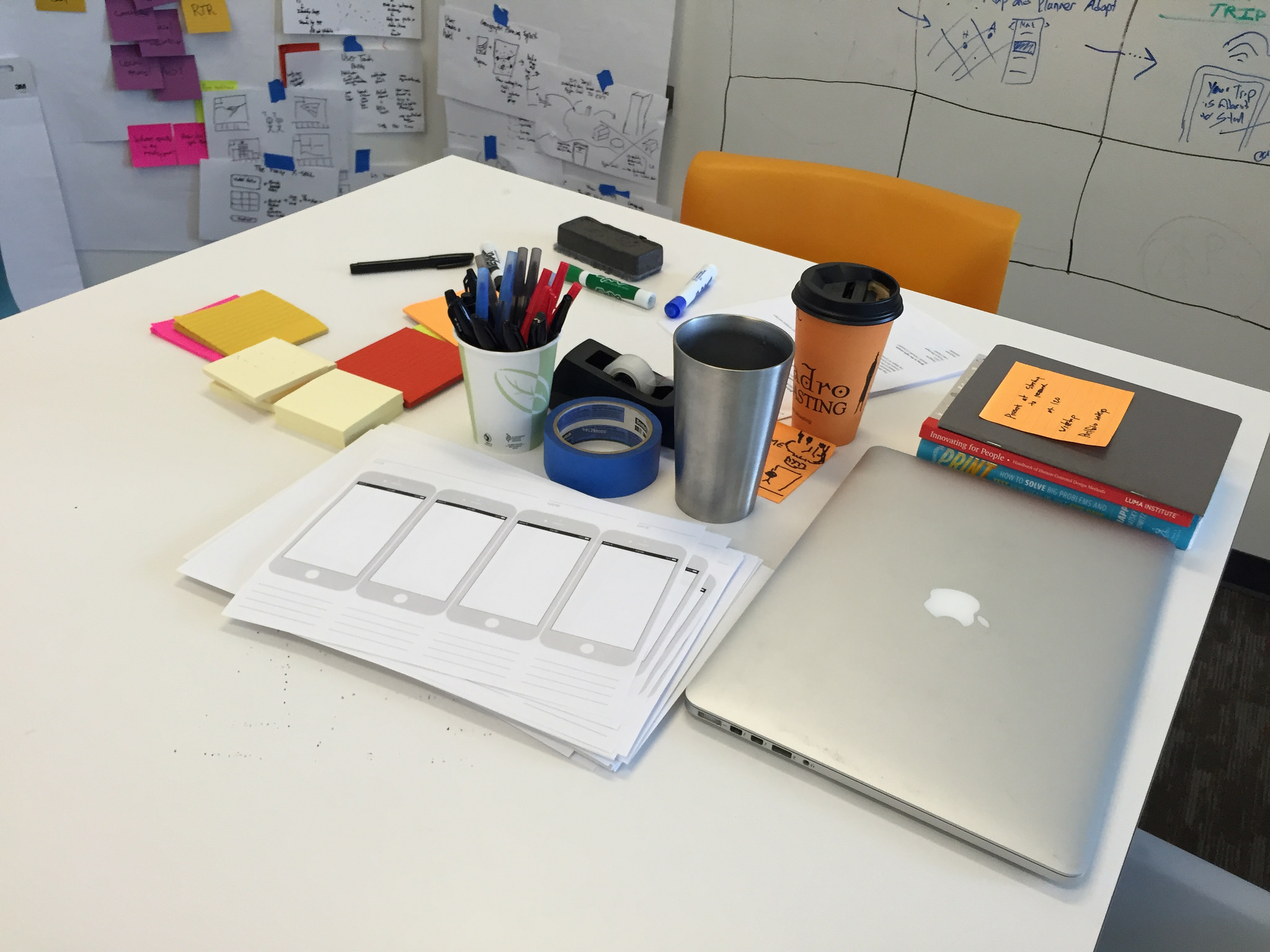
On Day 4, the team builds some sort of prototype of their idea. In our case, we created an InVision prototype, which we could run on a mobile phone for usability testing purposes.
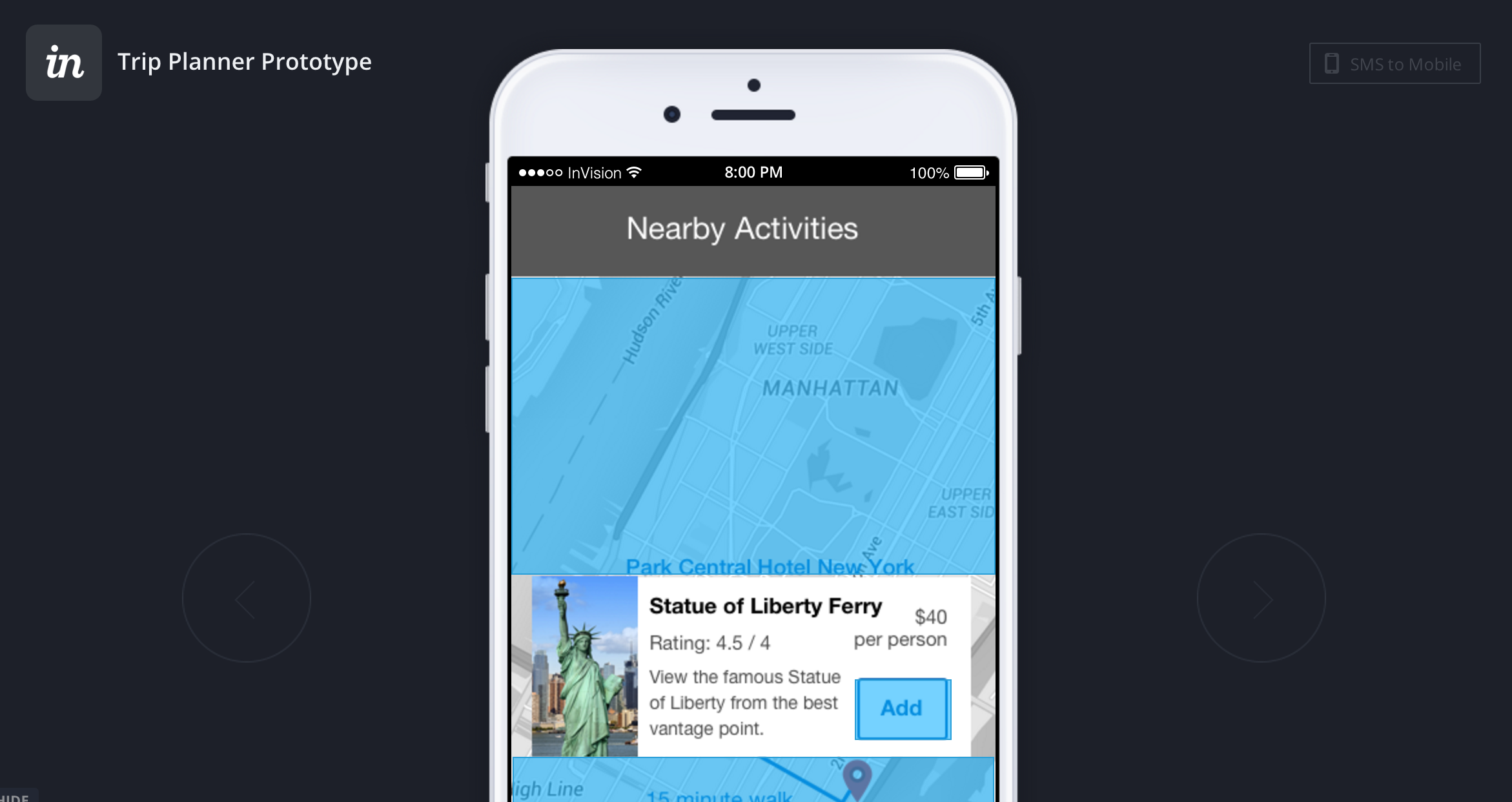
On the last day of the Design Sprint, we went to the local mall to do some intercept studies. We found people in the mall, and asked them if they would participate in a quick study with us. We then gave them the situation from our user story, and asked them to use our prototype, thinking aloud along the way. By doing about ten of these studies, we were able to see that we had a useful concept, but that there were several UI elements that we could improve upon. This gave us the feedback we needed to move forward with the concept after the Design Sprint was over.
Moving forward, I will identify which problems are ideal candidates for the Design Sprint process. Such problems are usually vaguely defined but somewhat limited in scope. For example, a product manager may be wondering how to use geographic data to further improve conversion and help the customer. They don't really know what to do or what problems to solve exactly, but the scope of geography has been defined.
After identifying the right problems, I will plan and facilitate more design sprints, making sure to be clear about deliverables and expectations.
I learned a lot about facilitating group discussions and design exercises, including how to set up activities and keep participants on track. I also gained more experience with new design exercises and intercept-type research studies.